
Author: IAGwebmaster


IAG GRANTS for IAG Regional Conference on Geomorphology Gradualism vs catastrophism in landscape evolution, Barnaul (Russia), 2-4 July 2015
The International Association of Geomorphologists (IAG) offered a number of grants to YOUNG GEOMORPHOLOGISTS (under 35 years old) who were willing to take part in the Regional Conference on Geomorphology to be held in Barnaul (Russia) on 2-4 July 2015.
The grants were offered to young scientists from less favoured countries of ASIA and EAST EUROPE, with a Purchasing Power Parity below 21,000 International Dollars (according to the World Development Indicators database, World Bank, updated 6 November 2014. For details see http://databank.worldbank.org/data/download/GNIPC.pdf– right column).
The IAG Regional Conference in Russia is organized by IAG jointly with the Russian Association of Geomorphologists (RuAG) and will be hosted by the Altai State University. An Intensive Course for Young Geomorphologists will be integrated into the post-conference fieldtrip in the form of discussions and seminars on the issues presented during the fieldtrip.
For further information on the Conference, please visit the website: http://iag2015.rurs.net/
The IAG/AIG has allocated 6,000 euros to this initiative. The amount of single grants will depend on the country of origin (or place of residence) and on estimated financial needs of the grant winners. The grants are intended to cover (at least partially) travel costs to and from Barnaul, accommodation during the Conference. In addition, the Organizing Committee will waive the Conference registration fee. The participation in the Intensive Course included in the post-conference field-trip is highly recommended and the intention to participate in the Course has been considered as a preferential title in the selection of the applicants.
The selection of candidates has been carried out by a Commission appointed by the IAG Executive Committee.
10 applications from 5 countries were received for the grants available.
8 applications were eligible and 2 non-eligible since the applicants were from Russia (which has a PPP over the fixed threshoid of 21,000 international dollars).
Finally, 6 IAG-grants have been awarded to the Young Geomorphologists reported below (in alphabetical order):
- Shreya BANDYOPADHYAY (India) Report
- Kapil GHOSH (India) Report
- Iliyan KOTSEV (Bulgaria) Report
- Diganta KUMAR (India) Report
- Archana PATIL (India) Report
- Yuanyuan ZHOU (China) Report
Mauro Soldati
IAG Vice-President and Training Officer
soldati@unimore.it

EGU Bagnold Medal 2015 to HEATHER A. VILES
The EGU 2015 Ralph Alger Bagnold Medal is awarded to Heather A. Viles for establishing the field of biogeomorphology and providing the foundation synthesis of the biological component of geomorphology in a range of climatic environments.
From the EGU medals 2015 webpage:
“Heather Viles has been a key figure in the development of the field of biogeomorphology. Her 1988 volume established the field and provided a synthesis of the biological component of geomorphology in a range of climatic environments. She has led the development of the field of microbial biogeomorphology, setting its research agenda via theoretically advanced papers that both provide a conceptual framework for rock-breakdown systems and define the role of microbial processes therein. This follows her earlier work on the issue of scale in weathering processes that provided the stimulus to redirect the field from a reductionist approach towards one that investigates breakdown processes across the spectrum of scales. Viles is also an outstanding field geomorphologist. She combines detailed field data collection with rigorous analytic techniques that investigate process mechanics across experimental platforms. These data are linked up to larger scale questions in Earth and environmental sciences. She has published important papers that explore the links between ecological and geomorphological systems in disturbance regimes and nonlinear perspectives on slope instability. Her work is set apart by its innovation. She has provided cutting edge, methodological developments for the field. For example, her research group was the first to apply DNA sequencing to rock breakdown. Of particular importance is her pioneering work on the development of non-destructive field techniques in rock-breakdown studies. Her recent experimental work investigating the role of inheritance on rock-breakdown processes on Mars and the weathering processes on asteroids illustrates her highly original approach to challenging research environments. In addition, Heather Viles is an inspirational leader in paving the way for the next generation of geomorphologists. In her work as an individual she builds opportunities for early career scientists to gain important experience.”
CONGRATULATIONS FROM THE IAG COMMUNITY!

Piotr Migoń, Heather A. Viles (Eds.), Sandstone Geomorphology – Landscape formation, field mapping, research methods, Zeitschrift für Geomorphologie, Supplementbände – Volume 59, 2015
In the series of Supplementary Issues of Zeitschrift für Geomorphologie a collection of papers arising from the conference Sandstone Landscapes III has just been published. The conference was co-organized by the Danxia Geomorphology Working Group and held in the Stołowe (Table) Mountains in SW Poland in April 2012. The volume contains 13 papers written by sandstone geomorphology specialists from Australia, China, the Czech Republic, and Poland. They cover a variety of specific subjects, including broader issues of rock control in sandstone terrains, overview of Danxia landscapes in China, rock slope stability, weathering processes and landforms, non-karst caves in sandstones, the origin of boulder accumulations, rock – soil – relief relationships, as well as the presentation of geomorphology of the conference area, i.e. the sandstone tableland of the Stołowe Mountains. Piotr Migoń (former co-chair of Danxia Geomorphology WG) and Heather Viles edited the volume. Abstracts (free) and full-texts (by subscription or to be purchased individually) can be accessed via
https://www.schweizerbart.de/papers/zfg_suppl/list#issue1
The full reference is: Sandstone Geomorphology. Landscape formation, field mapping, research methods. Eds.: Piotr Migoń; Heather A. Viles. Zeitschrift für Geomorphologie, vol. 59 (2015), Suppl. Issue 1, 268 pp.
IAG GRANTS for BSG Post-Graduate Training Workshop, Windsor, UK, 8-11 December 2014
The International Association of Geomorphologists (IAG) offered 2 grants of 250 (two-hundred-fifty) Euros to PhD STUDENTS in GEOMORHOLOGY from EUROPE (except UK) who took part in the BSG Post-Graduate Training Workshop (Windsor, UK, 8-11 December 2014). PhD students at an early stage of their PhD programme were encouraged to apply. The Workshop was organised by the British Society for Geomorphology (BSG) and recognised by the International Association of Geomorphologists (IAG). The course provided PhD students with elements of training for research and with an opportunity to meet others at an early stage of their training when they were wrestling with the problems of research design etc. There were sessions about starting research, designing research projects, methodological issues, modelling, fieldwork problems and remedies, presentations techniques, time management, and workshops for project organisation and discussion of individual projects.
For further information on the Workshop, please visit the BSG website at: http://www.geomorphology.org.uk/postgraduates/windsor
The IAG grants were awarded to:
- Calogero SCHILLACI (Italy/Germany) Report
- Laura VEZZOLA (Italy) Report
Mauro Soldati
IAG Vice-President and Training Officer
soldati@unimore.it
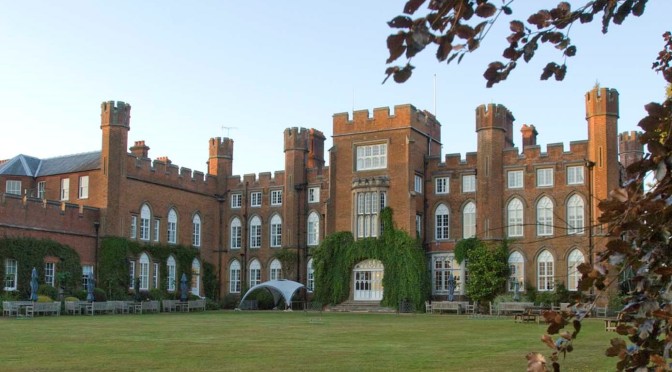
BSG Post-Graduate Research Training Workshop Windsor, United Kingdom, 8-11 December 2014
The Workshop is organised by the British Society for Geomorphology (BSG) and recognised by the International Association of Geomorphologists (IAG). The course will provide PhD students with elements of training for research and with an opportunity to meet others at an early stage of their training when they were wrestling with the problems of research design etc. There will be sessions about starting research, designing research projects, methodological issues, modelling, fieldwork problems and remedies, presentations techniques, time management, and workshops for project organisation and discussion of individual projects.
For further information on the Workshop, please visit the BSG website at: http://www.geomorphology.org.uk/postgraduates/windsor
The International Association of Geomorphologists (IAG) offers 2 grants of 250 (two-hundred-fifty) Euros to PhD STUDENTS in GEOMORHOLOGY from EUROPE (except UK) who are willing to take part in the BSG Post-Graduate Training Workshop.
IAG GRANTS for the International Conference on Analysis and Management of Changing Risks for Natural Hazard, Padua, Italy, 18-19 November, 2014
The International Association of Geomorphologists (IAG) offered 2 grants of 250 Euros each to PhD students in Geomorphology from Europe (except Italy) who were willing to take part in the Conference on Analysis and Management of Changing Risks for Natural Hazards , to be held in Padua, Italy, on 18-19 November 2014.
The Conference provided an opportunity to discuss multi-hazard risks and multi-disciplinary research results on the effects of changing of hydro-meteorological risks and their effects on planning strategies. The conference focused 1) on natural hazard process understanding and innovative methodologies for quantitative hazard and risk forecasts, and 2) on the integration of engineering, socio-economic and human sciences in risk management and prevention planning in practice.
The Conference represented the culmination of the EC projects CHANGES (www.changes-itn.eu) and IncREO (www.increo-fp7.eu) and provided a forum for exchange of ideas related to effective risk management strategies.
Mauro Soldati
IAG Vice-President and Training Officer
soldati@unimore.it
IAG GRANTS for the International Workshop “Geomorphosites, lever of local socio-economic development. From European experiences to Maghrebian and African projects”, Beni Mellal, Morocco, 2-4 October, 2014
The International Association of Geomorphologists (IAG) offers 1 grant of 500 Euros to a Young Geomorphologist from a Northern African or Sub-saharian country (except Morocco) who is willing to take part in the Workshop on Geomorphosites to be hosted by the University Sultan Moulay Slimane, Beni Mellal (Morocco) on 2-4 October 2014, and the related Intensive Course organised by IAG Working Group on Geomorphosites on 1st October 2014.
The objective of the Workshop is to enable geomorphology experts and local actors from the Maghreb and African countries to build upon existing European experiences in material recovery and socio-economic development and try to adapt these experiences to requirement on the ground. The Workshop is intended for both academics and the regional planning stakeholders and decision makers to reflect on the role of the geomorphosites in the local socio-economic development. The Intensive Course will deal with definitions and characterstics of geomorphosites, as well as various investigation methods (assessment and mapping).
Priority will be given to applicants who have a special interest in the field of geomorphosites, to be proved by their CV.
The Commission appointed by the IAG Executive Committee received 2 applications and assigned the grant to:
Dr. Tarek BEN FRAJ from Tunisia Report
Mauro Soldati
IAG Vice-President and Training Officer
soldati@unimore.it
IAG Glossary Of Geomorphology – by Prof. Andrew Goudie
Thanks to the work of Prof. Andrew Goudie, the IAG GLOSSARY OF GEOMORPHOLOGY is now available for the international geomorphological community!
IAG GRANTS for BSG Post-Graduate Training Workshop, Windsor, UK, 9-12 December 2013
The International Association of Geomorphologists (IAG) offered 2 grants of 300 (three-hundred) Euros to PhD STUDENTS in GEOMORHOLOGY from EUROPE (except UK) who were willing to take part in the BSG Post-Graduate Training Workshop (Windsor, UK, 9-12 December 2013). PhD students at an early stage of their PhD programme have been encouraged to apply. The Workshop was organised by the British Society for Geomorphology (BSG) and recognised by the International Association of Geomorphologists (IAG). The course provided PhD students with elements of training for research and with an opportunity to meet others at an early stage of their training when they were wrestling with the problems of research design etc. There have been sessions about starting research, designing research projects, methodological issues, modelling, fieldwork problems and remedies, presentations techniques, time management, and workshops for project organisation and discussion of individual projects.
For further information on the Workshop, please visit the BSG website at: http://www.geomorphology.org.uk/postgraduates/windsor
IAG-GRANT HOLDERS
The selection of candidates has been carried out by a Commission appointed by the IAG Executive Committee.
Mauro Soldati
IAG Vice-President and Training Officer
IAG GRANTS for the 8th International Conference on Geomorphology Paris, France, 27-31 August 2013
A remarkable number of applications for IAG grants for the Paris Conference was received. Out of 97 applications received, 70 were eligible for grant awarding. The process of grant acceptance has been completed and the final list of the IAG grant holders is reported. The Selection Committee appointed by the IAG Executive Committee assessed the applications and finally 20 Young Geomorphologists under 35 years old have been supported. They came from 12 countries with a Purchasing Power Parity below 16,000 international dollars. Reports by the grant holders are linked aside.
Among the IAG grant holders, the Jean Tricart Scholar has been nominated in occasion of the 1st General Assembly and a prize has been offered by the French Group of Geomorphology (GFG). This prize has been offered in recognition of the outstanding research carried out by the French geomorphologist Jean Tricart (1920-2003) in Latin America, Africa and Asia.
The designated Jean Tricart Awarded is Danang Sri HADMOKO, from Gadjah Mada University, Bulaksumur, Yogyakarta, Indonesia.
GRANT HOLDERS:
- ALEXSANDR Orkhonselenge (Mongolia) Report
- ANGHEL Titu (Romania) Report
- BANDYOPADHYAY Shreya (India) Report
- DIAS NERY Tulius (Brazil) Report
- GREEN Andrew (South Africa) Report
- HADMOKO Danang Sri (Indonesia) Report
- IOANA-TOROIMAC Gabriela (Romania) Report
- IOSIF Daniel (Romania) Report
- JOUBERT Rebecca (South Africa) Report
- LISTO Fabrizio (Brazil) Report
- LU Hongua (China) Report
- NEHME Carole (Lebanon) Report
- RAZAK Khamarrul (Malaysia) Report
- REN Xiaozong (China) Report
- SEPEHR Adel (Iran) Report
- TEMOVSKI Marjan (Republic of Macedonia) Report
- TRIPATHI Manisha (India) Report
- ZANGMO TEFOGOUM Ghislain (Cameroon) Report
- ZHANG Deguo (China) Report
- ZHOU Gongdan (China) Report
Mauro Soldati
IAG/AIG Training Officer
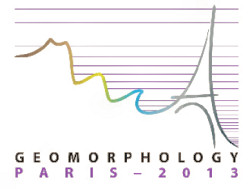
The 8th IAG International Conference on Geomorphology – Geomorphology and Sustainability, Paris, France, 27-31 August, 2013
The 8th International Conference on Geomorphology of the International Association of Geomorphologists (IAG) took place in Paris at the Cité des Sciences de La Villette from August 27 to 31, 2013. The main topic of this 8th Conference was “Geomorphology and Sustainability“. Organized by the Groupe Français de Géomorphologie (GFG) and open to all scientists and practitioners, this Conference included 26 scientific sessions, 5 key-note lectures and one Workshop devoted to Young Geomorphologists.
YOUNG GEOMORPHOLOGISTS SESSION
Convenors: Etienne COSSART, Johnny DOUVINET & Stuart LANE
This session welcomed young scientists (PhD students, post-doctorates) who were interested in discussing new approaches and methods in geomorphology (spatial analysis, mathematical modelling, conceptual and quantitative approaches and links between them). Presentations could focus on any component of the discipline and related earth sciences (hydrology, Quaternary geology, soil sciences, etc.), and be either fundamental or applied. Preliminary results and discussions of fieldwork and methodological strategies (observation, data acquisition before modelling) were appropriate, as well as methodological developments, such as geomorphic mapping through GIS. Equally, numerical simulation approaches such as those linked to complexity theory (agent-based modelling, Cellular Automata) or physically-based methods for specific process representations have been welcomed. The participants of this session have been invited to participate to the intensive course for young geomorphologists held at the end of the conference (from September 1st to 3rd).

8th ICG – Paris, August 27-31, 2013
The 8th International Conference on Geomorphology of the International Association of Geomorphologists (IAG/AIG) took place in Paris at the Cité des Sciences de La Villettefrom August 27 to 31, 2013. The main topic of this 8th Conference was “Geomorphology and Sustainability”. Organized by the Groupe Français de Géomorphologie (GFG) and open to all scientists and practitioners, this Conference included 26 scientific sessions, 5 key-note lectures and one Workshop devoted to Young Geomorphologists. Fourteen field trips in various parts of France and neighbouring countries have been attended by the participants.
20 Young Geomorphologists have been supported with grants offered by IAG.
IAG International Workshop on Objective Geomorphological Representation Models: Breaking through a New Geomorphological Mapping Frontier, Salerno – Cilento and Vallo di Diano Geopark, Italy, 15-19 October, 2012

IAG International Workshop on Objective Geomorphological Representation Models: Breaking through a New Geomorphological Mapping Frontier, Salerno – Cilento and Vallo di Diano Geopark, Italy, 15-19 October, 2012
SAAG workshop on Dryland Geomorphology, Gobabeb, Namibia, 8-12 September, 2012
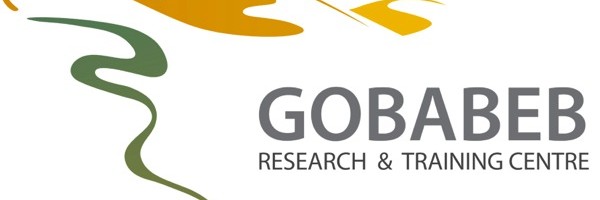
SAAG workshop on Dryland Geomorphology, Gobabeb, Namibia, 8-12 September, 2012
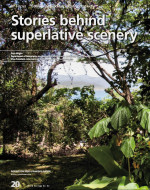
Stories behind superlative scenery by Piotr Migoń
Geomorphology is part of Earth Sciences and is best described as the scientific study of landforms, their assemblages, and the processes that moulded them in the past and that continue to change them today. Geomorphologists study the shapes of landforms and the regularities of their spatial distribution; they decipher their origin and evolution, and try to establish their ages. Geomorphology has also been dubbed the ‘science of scenery’. Thus, the scenery – the combination of landforms and water – has become a subject of scientific inquiry.
Geomorphology is also about the interpretation of natural landscapes and, in the context of World Heritage properties, it helps us to understand what brought about their uniqueness and their rarity.
Read the whole paper published by World Heritage Review magazine published jointly by UNESCO and Publishing for Development (printed four times a year in English, French and Spanish). The publication presents and promotes the preservation of our World Heritage, with detailed feature articles and news items about the most outstanding cultural and natural sites in the world.
BSG Post-Graduate Research Training Workshop, Windsor, United Kingdom, 12-15 December 2011
The IAG International Symposium on Geosite Management, Savoie – Mont Blanc (France): 5-10 September, 2011

The IAG International Symposium on Geosite Management, Savoie – Mont Blanc (France), 5-10 September, 2011

Mike J. Smith, Paolo Paron and James S. Griffiths (Eds.), Geomorphological Mapping. Methods and Applications. Developments in Earth Surface Processes, 2011, 15: 1-601
Geomorphological Mapping: a professional handbook of techniques and applications is a new book targeted at academics and practitioners who use, or wish to utilise, geomorphological mapping within their work. Synthesising for the first time an historical perspective to geomorphological mapping, field based and digital tools and techniques for mapping and an extensive array of case studies from academics and professionals active in the area. Those active in geomorphology, engineering geology, reinsurance, Environmental Impact Assessors, and allied areas, will find the text of immense value.
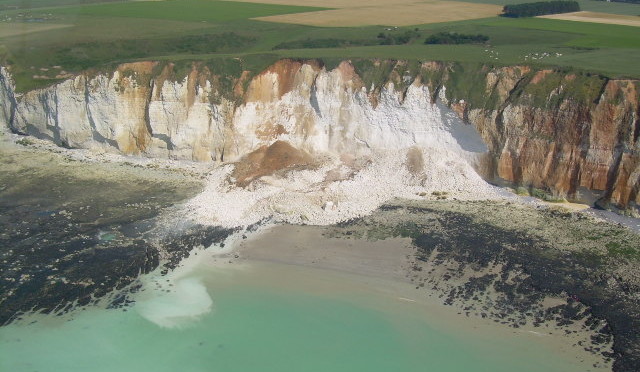
FORMOSE Post-graduate Training School: Costal hazard assessment and management, Caen, France, 19-25 June 2011
The Training School was organized by the European Centre on Geomorphological Hazards (CERG, Strasbourg, France) – which is one of the centres of the EUR-OPA Agreement of the Council of Europe – in close collaboration with the Euro-Mediterranean Centre on Insular Coastal Dynamics (ICoD, Valletta, Malta) and the European Centre on Coastal Risks (CerCo, Biarritz, France). The aim of the course was to provide the participants with updated knowledge on traditional and innovative multi-disciplinary methods and techniques for the analysis of geomorphological coastal instability processes and related hazards and risks.
IAG GRANTS for the FORMOSE Post-graduate Training School Costal hazard assessment and management, Caen, France, 19-25 June 2011
The International Association of Geomorphologists (IAG) offered 1 grant of 300 (three hundred) Euros each to a YOUNG GEOMORPHOLOGIST (under 35 yrs old) from EUROPE.
Reportby the IAG grant holder: Mara Nunes
IAG Regional Conference on Geomorphology 2011: Geomorphology for Human Adaptation to Changing Tropical Environments, Addis Ababa, Ethiopia, 18-22 February, 2011
The International Association of Geomorphologists (IAG) offered up to 7 grants to YOUNG GEOMORPHOLOGISTS (under 35 yrs old) from AFRICA who were willing to take part in the Regional Conference on Geomorphology to be held in Addis Ababa (Ethiopia) from 18-22 February 2011.
The IAG has allocated 5000 euros to this initiative.
Mauro Soldati
IAG Training Officer
Addis Ababa 2011
The IAG Regional Conference on Geomorphology for Human Adaptation to Changing Tropical Environments held in Addis Ababa, Ethiopia, 18-22 February 2011. The Conference promoted exchange of studies and methods for the investigation of tropical geomorphology in connection with different effects of global environmental changes.
International Cooperation – Talk 1 | International Cooperation – Talk 2 | Field Guide for MER | Field Guide for NEH | Field Guide for AFAR | Final Report on the IAG RCG-2011 | Conference program | Abstract Volume of the IAG RCG-2011 | Report on the IAG Intensive Course
Recommendation: please remember to mention the source when you utilize the material contained in the Guidebooks.

BSG Post-Graduate Research Training Workshop – Windsor, UK, 13-16 December 2010
The Workshop was organised by the British Society for Geomorphology (incorporating the former BGRG) and recognised by the International Association of Geomorphologists (IAG). There will be sessions about starting research, designing research projects, methodological issues, modelling, fieldwork problems and remedies, presentations techniques, time management, and workshops for project organisation and discussion of individual projects
BSG Post-Graduate Research Training Workshop Windsor, United Kingdom, 13-16 December 2010
The Workshop is organised by the British Society for Geomorphology (incorporating the former BGRG) and recognised by the International Association of Geomorphologists (IAG). IAG offered 3 grants of 350 (three-hundred-fifty) Euros to PhD STUDENTS in GEOMORHOLOGY from EUROPE (except UK) who were willing to take part in the BSG Post-Graduate Research Training Workshop (Windsor, UK, 13-16 December 2010).
Mauro Soldati
IAG Training Officer
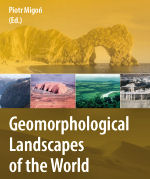
Piotr Migoń (Ed.), Geomorphological Landscapes of the World. Springer, 2010
Physical landscapes are one of the most fascinating facets of our Planet, which tell stories about the evolution of the surface of the Earth. This book provides an up-to-date information about the geomorphology of the selected ‘classic’ sites from around the world and shows the variety of geomorphological landscapes as moulded by different sets of processes acting over different timescales, from millions of years to days. The volume is written by nearly fifty geomorphologists from more than twenty countries who for many years have researched some of the unique sceneries on the planet. The thirty six chapters present each continent of the world. They describe landscapes of different origin, so that the reader can learn about the complexity of processes behind the sceneries.
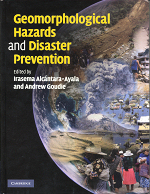
Irasema Alcantara-Ayala and Andrew S. Goudie (Eds.) – Geomorphological Hazards and Disaster Prevention. Cambridge University Press, 2010
Human activities, especially in the last two centuries, have had a huge impact on the environment and landscape through industrialisation and land-use change, leading to climate change, deforestation, desertification, land degradation, and air and water pollution. These impacts are strongly linked to the occurrence of geomorphological hazards, such as floods, landslides, snow avalanches, soil erosion, and others. This book, with chapters written by an international team of geomorphologists provides state-of-the-art knowledge about the contribution of geomorphology to the comprehension of hazards, links the work undertaken by geomorphologists to the framework of the likely impacts of climatic change and global environmental change, shows the significance of technology (remote sensing and Geographical Information Systems) for hazard and risk assessment and management, and demonstrates the role of geomorphology in vulnerability and risk analysis, disaster prevention and sustainability.
